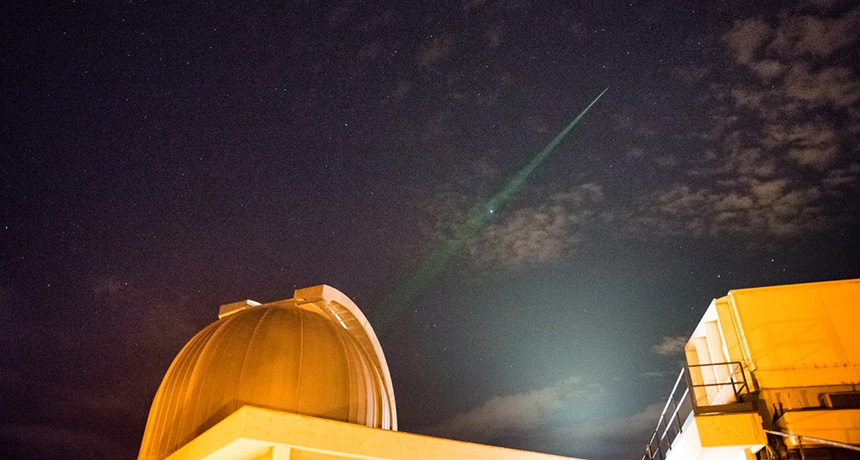Quantum weirdness survives space travel
Photons sent to satellite and back maintain cryptography ability

QUANTUM MESSAGES Scientists used a telescope (shown) to direct photons to satellites and then measure the photons’ quantum properties on their return. The green laser visible in the image is used to track the location of the satellite. The scheme shows that quantum communication in space may be technologically feasible.
Marco Tomasin







